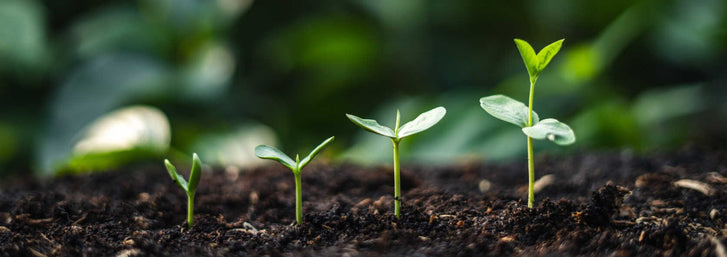
Jordan Freytag

Growing initiatives in schools and community centers around the country are teaching kids and members of the community how to grow their own sprouts and microgreens and the health benefits of including them in their diets. We see the importance of educating kids and adults about these high-nutrition food sources because, in this day and age, clean food packed with nutrients is hard to come by and eating sprouts fills you with the nutrients to lead to longer and fuller years.
One thing both microgreens and sprouts are full of is enzymes. And according to Dr. Mercola, a diet rich in enzymes boosts endurance, optimizes digestion, and slows down aging by regenerating cells. “Sprouts are a particularly excellent source of live enzymes,” He states. Yes, raw vegetables are plentiful in enzymes but sprouts contain roughly 100 times more enzymes.
According to Sproutnet.com, the four sprouting seeds with the highest enzyme content are Rye, Wheat, Mung beans, and Alfalfa—but really, all sprouted seeds contain high concentrations of food-based enzymes that aid in energy production, absorption of oxygen, getting nutrients into your cells, etc. The various functions that enzymes support work together to improve one one’s feeling of vitality and overall health.
We think spreading knowledge about the health benefits of microgreens and sprouts and how easy they are to grow is really important. That is why we’ve taught short comprehensive classes about sprouting and “microgreening” right in our headquarters. We do this through the U of U’s Continuing Engagement and Community Education. For those of you in the Salt Lake area, check in with us for upcoming classes. We educate because we want people to be able to make a positive change in their eating habits if they want to. We want to be able to show them how easy it can be. We teach about the jar method and the tray method for spouting, and we review growing microgreens both with soil and hydroponically.

We’ve received feedback from teachers who have initiated sprout and microgreen growing programs in their classrooms and seen how well the children respond to them. One such teacher told us that by using a greenhouse on school grounds, the educators were able to involve children in a fairly large scale microgreens project. Each child was able to participate in growing a tray of microgreens, resulting in a microgreens-infused lunch for every child. This activity demonstrated how they can fuel their bodies cleanly and sustainably with just a little know-how, effort, and patience.
For more on educating your children (or anyone, really) about growing, check out our Tips for Encouraging Kids to Garden since getting your child or children involved in gardening is a good way to teach about the environment and health!
Leave a comment
Your email address will not be published. Required fields are marked *
0 Comments
No Comments yet! Be the first to start a conversation
Further Reading

Reviewing the Aquatree Garden: A True Leaf Market Experience
Coming Soon!

Ashleigh Smith
2024-04-221 min read0
Parasitoid Wasps: A Beneficial Insect in the Garden
Written By Lara Wadsworth There are estimated to be around one million different species of parasitic wasps worldwide. In fact, most wasps are parasitic, which means they live on or in a host at the host's expense. For common garden pests like aphids, ...

Ashleigh Smith
2024-04-226 min read0
Succession Planting: The Key to a Continual Harvest
Coming Soon!

Ashleigh Smith
2024-04-221 min read0
10 Natives of the Southwest USA for Pest Control
Written By Lara Wadsworth The Southwestern United States is a region incredibly unique to the rest of the country. The hot, dry weather can be challenging for plants and animals to thrive without additional help. That is why gardening with natives can ...

Ashleigh Smith
2024-04-157 min read0



